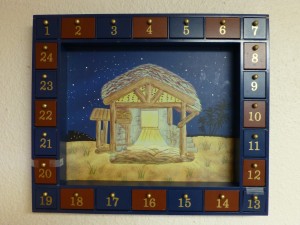For anyone interested in the Martyrology, or the Church’s “sanctoral cycle,” November 1 is an especially uplifting feast. By venerating all saints at once, this celebration more than any other day of the year invites reflection on the very phenomenon of venerating saints. Today’s entry in the older Martyrology highlights the origin of the feast:
The Festival of All Saints, which Pope Boniface IV, after the dedication of the Pantheon, ordained to be kept generally and solemnly every year, in the city of Rome, in honor of the blessed Virgin Mary, Mother of God, and of the holy martyrs. It was afterwards decreed by Gregory IV that this feast, which was then celebrated in many dioceses, but at different times, should be on this day kept by the whole Church in honor of all saints.
The 2004 edition of the Martyrology focuses on the goals of the feast:
The solemnity of all Saints who with Christ are in glory, by which, under the joy of one feast, the holy Church still in pilgrimage on earth venerates the memory of those whose society causes heaven to rejoice, so that she may be spurred on by their example, may rejoice in their protection, and may be crowned by their triumph in the sight of the divine majesty unto endless ages.
Of the three goals listed, the first two are standard. Mediator Dei 166-168 and Sacrosanctum Concilium 104 and other sources teach that we venerate the saints in order to be instructed and encouraged by their example and in order to benefit from the protection of their prayers. But the third goal listed in the Martyrology points to something more: that we “may be crowned by their triumph in the sight of the divine majesty unto endless ages.” What does it mean?
Of course, it could just mean that we celebrate the Solemnity of All Saints so that we can be saints, too, that is, so that we can be crowned by a triumph just like their triumph. But I like to see in this words the stronger assertion that we will be crowned by their triumph. Because we are all citizens of one heavenly city and members of one mystical body, the glories of the saints are our glories, and to the degree that we make our calling and election sure (2Peter 1:10) we lay more permanent hold on the claim that their triumph is ours.
The reason I like this “strong” reading of the Martyrology is that it emphasizes our communion with the saints, the fact that we are bound together as one by the sharing of spiritual goods, as Leo XIII explains in Mirae Caritatis 12. And this opens onto the profound teaching of Lumen Gentium 50: “Nor is it by the title of example only that we cherish the memory of those in heaven, but still more in order that the union of the whole Church may be strengthened in the Spirit by the practice of fraternal charity.”
This beautiful sentence sets the definitive context for today’s Solemnity: the saints’ example is good for me, and the saints’ protection is good for me, but the fact that the saints and I are bound together by mutual attention and concern is good for the Church. In a given situation I may need an example to follow, and in a given situation I may need the help of someone’s prayer, but at all times and by her very nature the Church needs to have spiritual unity. Of course, the very fact that all the members receive life and direction from Christ the head makes the Church one in reality, but this good is incomplete until it is carried into action.
One can see this emphasis in that wonderful proto-martyrology, chapters 11 and 12 of the Letter to the Hebrews. After listing and commemorating one after another of the saints who have preceded us, the author says, “Therefore, since we are surrounded by so great a cloud of witnesses, let us also lay aside every weight, and sin which clings so closely, and let us run with perseverance the race that is set before us…” (Heb 12:1). Even though the thrust of the whole passage is an appeal to the example of the saints, the image of being “surrounded” by a “cloud of witnesses” says much more than “Let’s be virtuous like those people back then were virtuous.” It says, “Your whole community is watching you and cheering for you and they understand what you are doing because they’ve done it too!” It says, “The saints are interested in you and your doings just as you are interested in them and theirs, and they rejoice in your victories as you rejoice in theirs!” This way of thinking of the saints’ example highlights the unity of the Church in the sharing of spiritual goods—something not only good for us or good for them but good for the Church as such.
In one sentence: Veneration of the saints in and of itself, even apart from answered prayers and examples emulated, builds up the Church.
P.S. Did you notice that the proto-martyrology is a catalogue of Biblical Saints?



